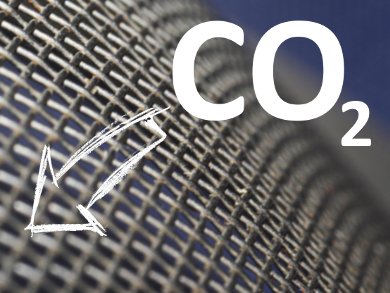Removing CO2 from mixtures of gases is important for carbon capture to reduce the environmental impact of combustion processes. Single-layer graphene has defined pore sizes in the nanometer range and has been suggested as a material for gas separation. However, its pores are usually too large (around 10 Å) to efficiently remove common gases, whose molecules have kinetic diameters between 2.5 and 4.0 Å.
Sheng Dai, Oak Ridge National Laboratory, Oak Ridge, and University of Tennessee, Knoxville, both TN, USA, De-en Jiang, University of California, Riverside, CA, USA, and colleagues propose a porous graphene membrane, coated with an ionic liquid, which can selectively separate gases such as CO2 and CH4. The team used molecular dynamics (MD) simulations to study a system comprised of porous graphene and the ionic liquid [emim][BF4] (1-ethyl-3-methylimidazolium tetrafluoroborate). They simulated two chambers separated by the coated membrane or an uncoated reference graphene and compared the resulting gas permeation for CO2, N2, and CH4.
The team found that all three gases pass through the uncoated graphene at roughly equal amounts. The ionic liquid-coated membrane, in contrast, was highly selective for CO2 permeation and hindered the passage of CH4, resulting in a CO2/CH4 selectivity ratio of roughly 42. The effect is attributed to the reduced pore size caused by the ionic liquid layer and the higher adsorption affinity of CO2 on the ionic liquid compared with other gases. According to the researchers, graphene/ionic liquid hybrid materials with tunable pore sizes could be promising for selective gas separation.
- Ion-Gated Gas Separation through Porous Graphene,
Ziqi Tian, Shannon M. Mahurin, Sheng Dai, De-en Jiang,
Nano Lett. 2017.
DOI: 10.1021/acs.nanolett.6b05121
